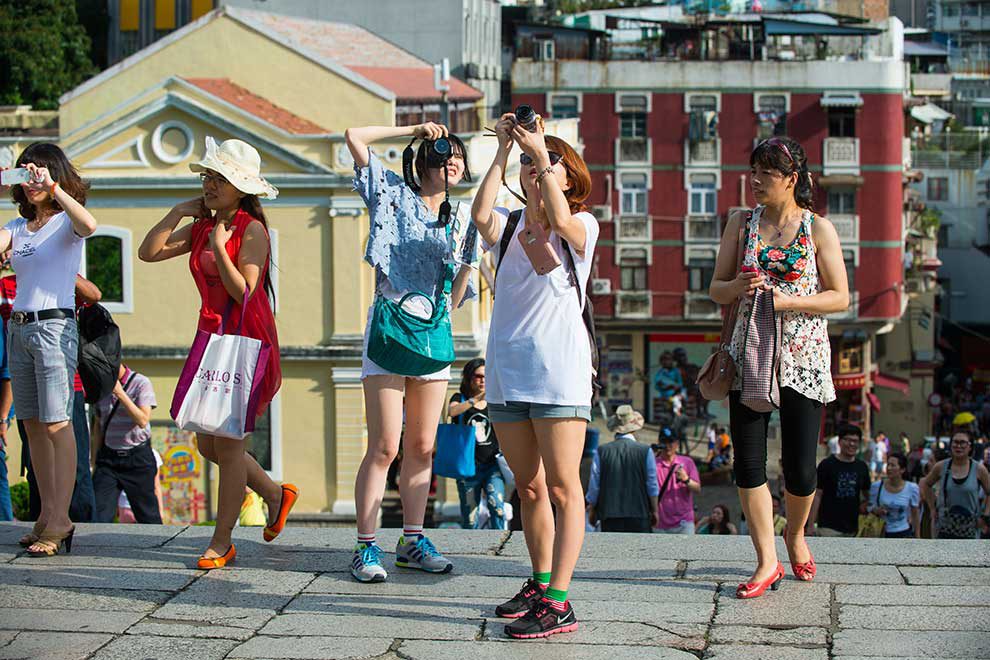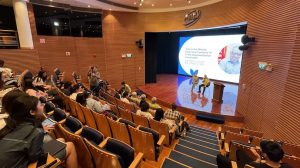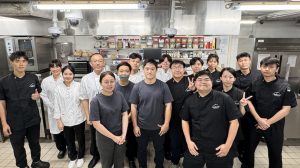A study involving 2 researchers from IFT says policymakers in Macao can improve tourism sector planning strategies for the city by digging deeper into available data on visitor arrivals from Mainland China. Their research proposes using a data-driven clustering technique in order to identify feeder markets and regions offering high growth potential and manage seasonal variation in tourism demand from different Chinese provinces.
The researchers used data available from Macao’s Statistics and Census Service to identify 5 major Mainland China market segments – or clusters – with distinct seasonal and growth patterns regarding tourism departures to Macao. The segmental information “suggested there is an association between tourism demand dynamics and each region’s geographical and socio-economic characteristics,” wrote Ms. Joey Sou Pek U and Ms. Wendy Tang Sio Lai – both from IFT – and Dr. Edmond Wu Hao Cun, from South China University of Technology, in Guangzhou, Mainland China.
As an illustration of the importance of Chinese consumers for Macao’s tourism market, 70.6 percent of the circa 35.80 million visitor arrivals in 2018 were people travelling from Mainland China, according to official data released in January. Approximately 41.6 percent of the visitors from Mainland China had been travelling from neighbouring Guangdong Province.
The research team’s conclusions on its data-driven study of Macao’s Mainland Chinese visitor traffic were featured in the paper “Segmentation of Chinese Tourists by Seasonal and Trend Patterns: The Case of Macao”, published last year in the Journal of China Tourism Research. Dr. Wu benefitted from a residential research grant from IFT to participate in the project.
The study noted that while, “intuitively, demand for short-haul destinations should demonstrate a lower seasonal variation, as trips can be made more flexibly across the year”, the results suggested “distance alone is not sufficient to explain the seasonal variation of Chinese visitor arrivals to Macao”.
For instance, among the 5 market clusters identified by the study, the one covering Anhui, Hubei, Hunan, Jiangxi and Guangxi provinces – identified as ‘S4’ – displayed the most extreme seasonal variation regarding tourism departures to Macao, despite the places within it being relatively close to the city.
“The results indicate that other factors, such as level of economic development (which directly relates to transportation infrastructure and disposable income for travelling), also play a key role in shaping the seasonal variation” in visitor arrivals, found the researchers. They noted that, among the clusters identified, S4 was “less developed” in terms of average gross domestic product.
Due to “cultural barriers, such as language differences, and a lack of international tourism experience, the segment has a low proportion of visitors who travel to Macao on an individual basis despite the relatively short distance between the [identified] provinces and Macao,” they further stated.
Travel schedule and climate
The study also noted an association between climate and travel schedule preferences among Mainland Chinese visiting Macao. “Visitors from segments located in the north and mid-west [of Mainland China] with extreme cold weather tend to visit Macao in the winter season, while those regions with a similar climate to Macao usually visit in the summer holiday time,” the researchers wrote.
An example of that was the S2 cluster identified by the study, comprising places in Mainland China’s northeast region and consisting of 1 municipality, Beijing, and the provinces of Heilongjiang, Jilin and Liaoning. Outbound trips to Macao from these places peaked in winter, with the low season occurring in summer. An opposite trend was displayed by the S4 cluster markets, located closer to Macao and thus experiencing a climate similar to that of Macao.
The study additionally discussed the market potential of the 5 Mainland China market segments it identified.
“The cluster analysis suggests that the developed markets (for example, first-tier coastal cities in S1) in China have reached a declining cycle, possibly because their residents are now more experienced in international travel so are… more interested in destinations that are further afield and culturally more diverse and challenging than Macao.”
The S1 cluster comprised 1 municipality, Shanghai; and 4 relatively well-developed coastal provinces – namely Guangdong, Fujian, Zhejiang and Jiangsu.
The researchers noted: “Second- and third-tier inland provinces, on the other hand, are emerging markets and have become potential new sources of growth… Despite the geographically more distant location [from Macao] of the high-growth segments, [continuous] development in transportation infrastructure in those areas could reduce the frictional effect of distance on demand in the long run.”
As a result of their findings, the researchers suggested Macao’s tourism authorities “develop products that draw visitors to stay longer and build up a brand image of a diversified destination that entices long-haul visitors who are more amenable” to travelling greater distances.
More info
Ms. Joey Sou Pek U is a Lecturer at IFT. She holds a master’s degree in development economics from the University of Birmingham in the United Kingdom. Ms. Sou teaches topics related to economics, statistics and finance. Her research interests include development economics, with a particular focus on empirical studies in Greater China.
Dr. Edmond Wu Hao Cun is an Associate Professor of the School of Economics and Commerce at South China University of Technology, in Guangzhou, Mainland China. His research areas include applied statistics, data mining, financial and risk management, and statistical analysis for the tourism and hospitality sectors. Dr. Wu holds a PhD from the University of Hong Kong.
Ms. Wendy Tang Sio Lai is a Research Assistant at the IFT Tourism Research Centre. She provides support to projects undertaken by the centre, and holds a master’s degree from the University of Macau in social sciences with a focus on economics.
https://doi.org/10.1080/19388160.2018.1492483









